Extraocular Muscles
|
Normal Dysthyroid Orbital Myositis PEO |
Muscle patterns: Normal Adult EOM
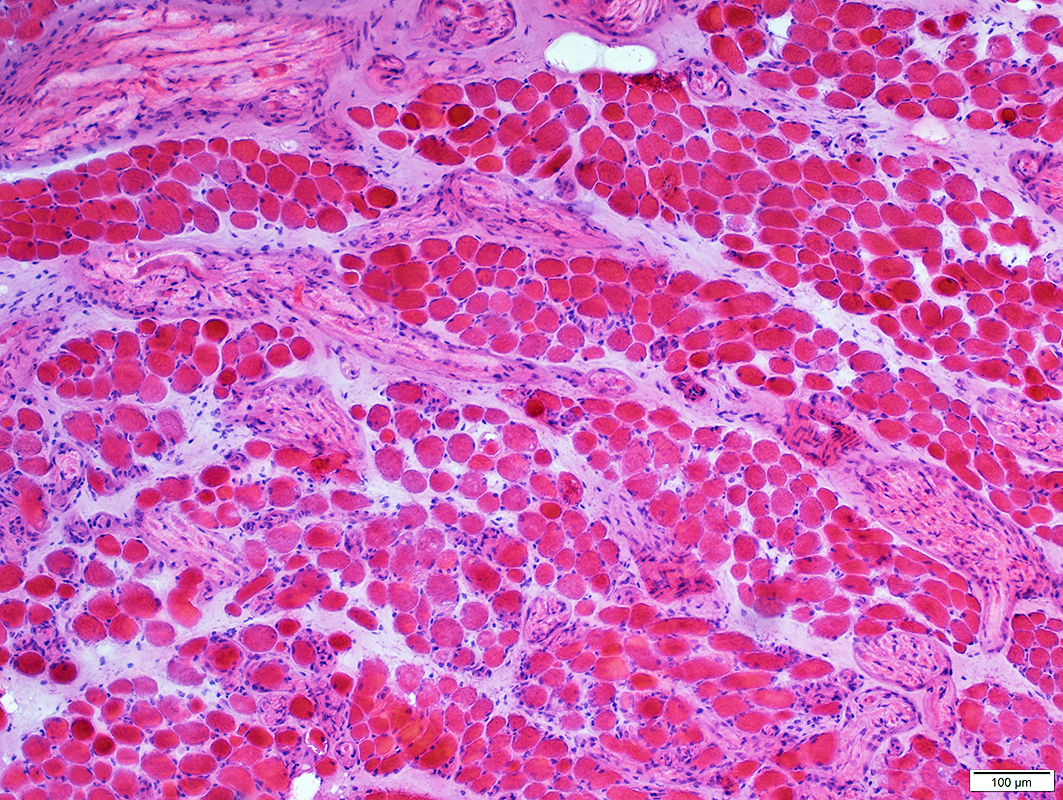 H&E stain |
Fascicles: Smaller than limb or trunk muscles
Endomysial connective tissue
More between muscle fibers than limb or trunk muscles
Especially in regions with intramuscular nerves
Perimysial Vessels: Normal structure
Intramuscular nerves: May be abundant
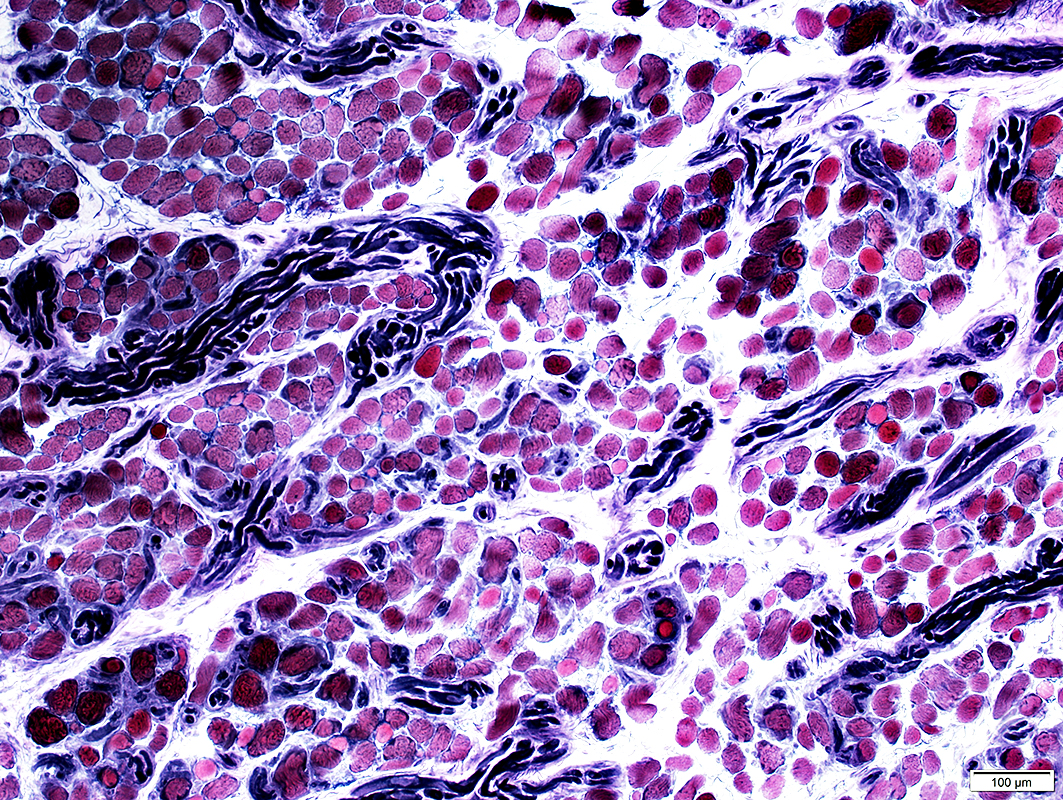 VvG stain |
Muscle fibers: Sizes & Regional patterns
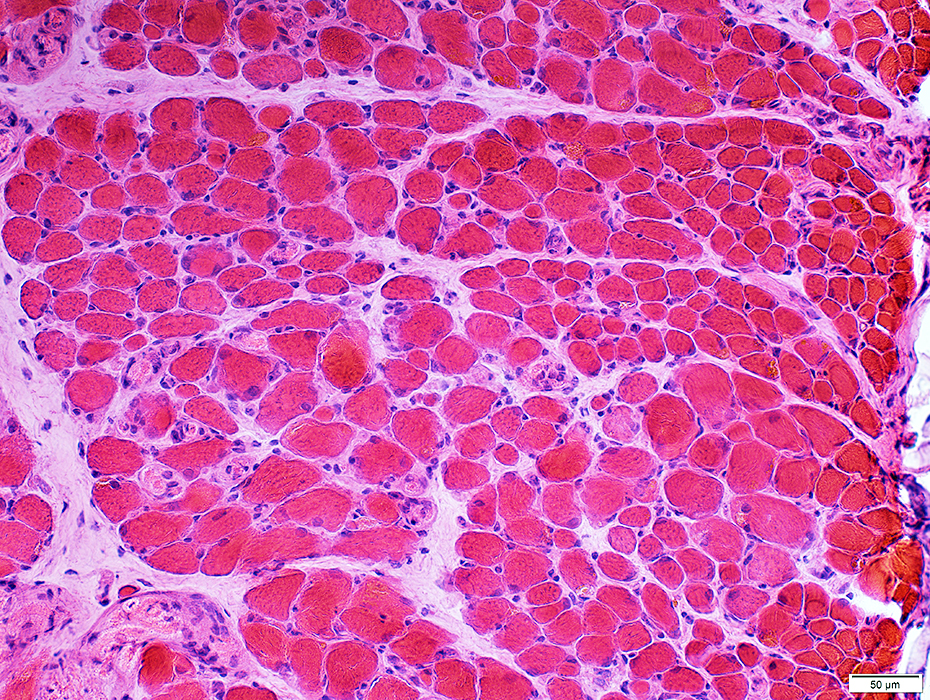 H&E stain |
Varied: Among, & within, fascicles
May be smaller at surface of muscle (Above)
 H&E stain |
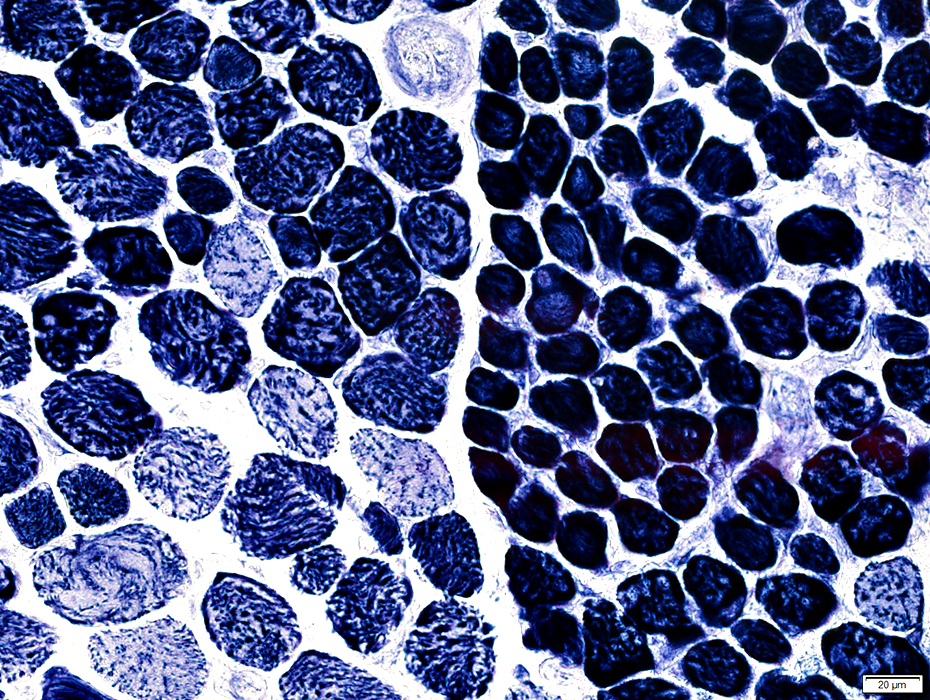 NADH stain |
Muscle fibers: Morphology
Muscle fibersSize: Varied; 10 to 50 μM in diameter
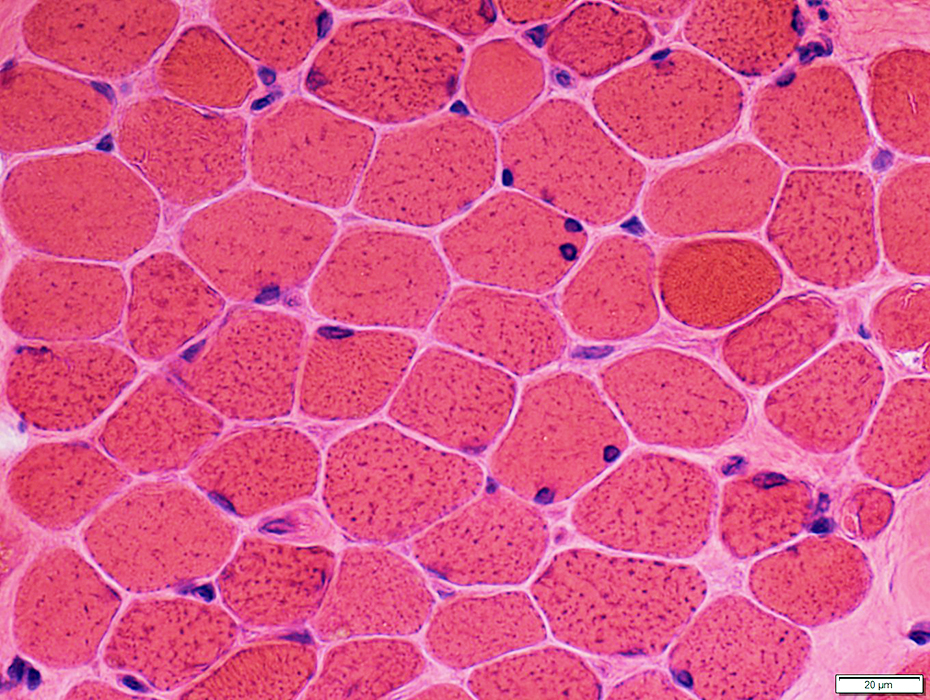 H&E stain |
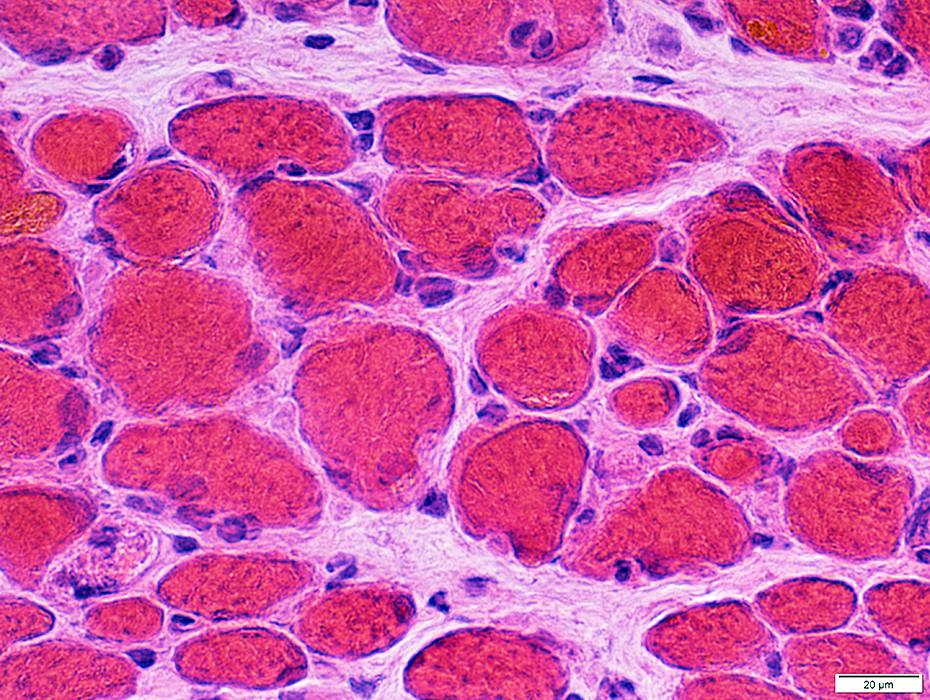 H&E stain |
Size: Varied; 10 to 50 μM in diameter
Myonuclei: Large or Small
Neuromuscular junctions: Pale regions around muscle fibers (Arrow)
Motor point: Endomysial connective tissue increased
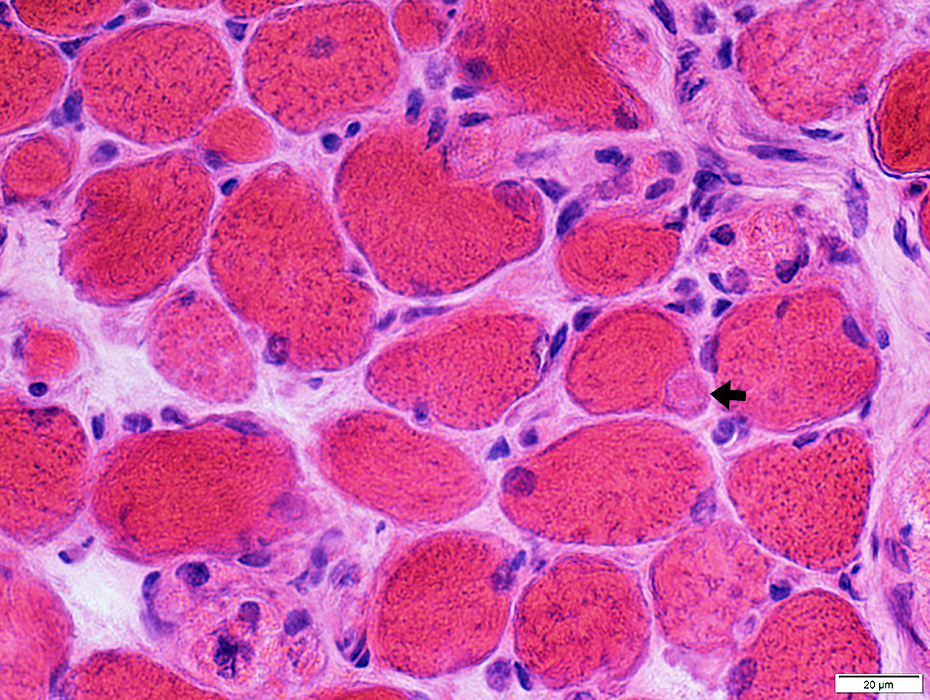 H&E stain |
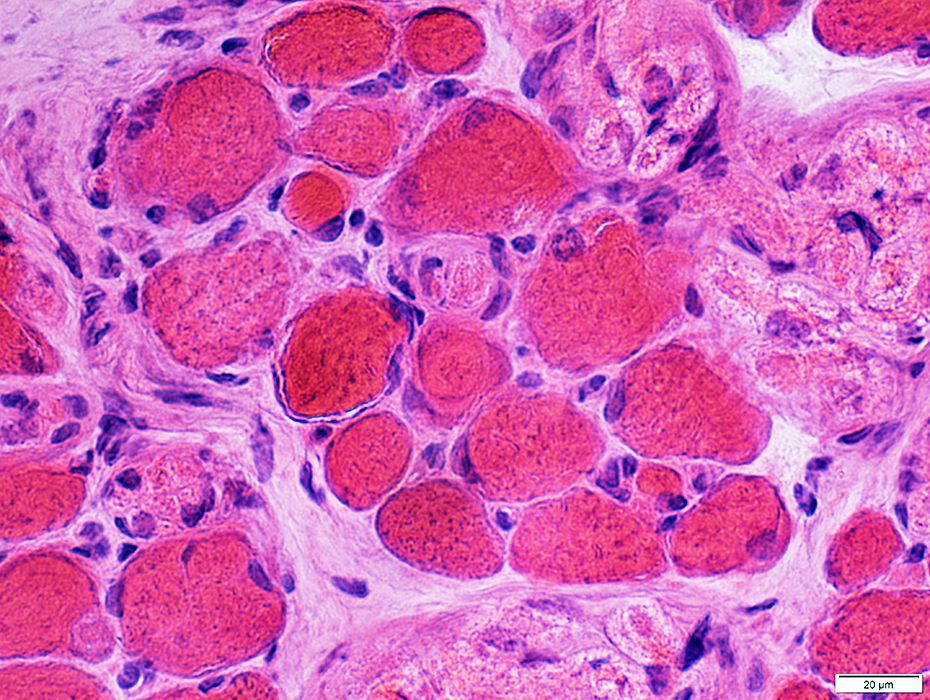 H&E stain |
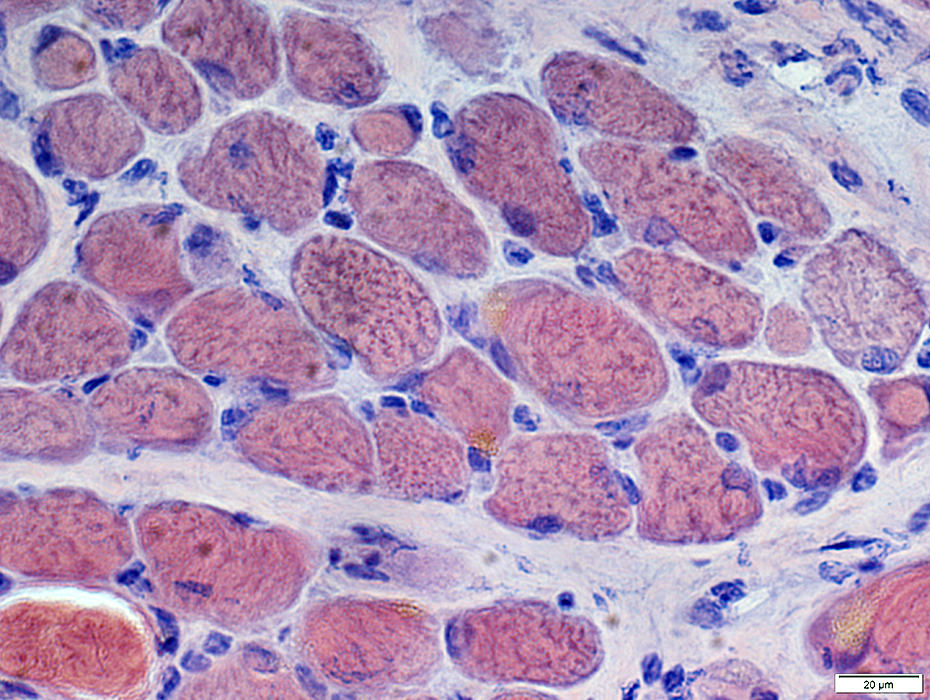 Congo red stain |
Internal architecture: Irregular
Myonuclei: Large
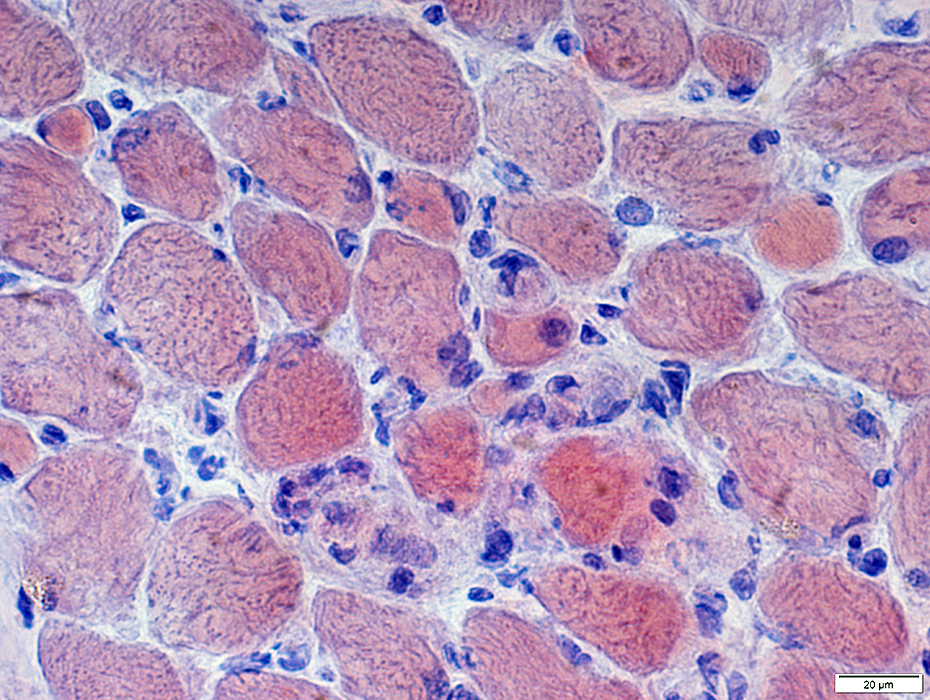 Congo red stain |
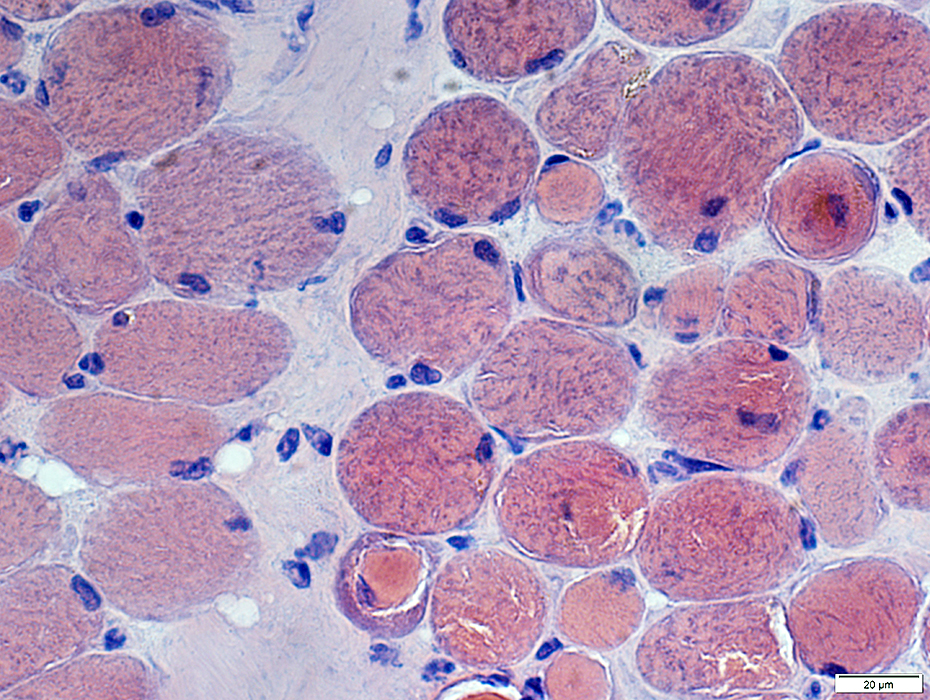 Congo red stain |
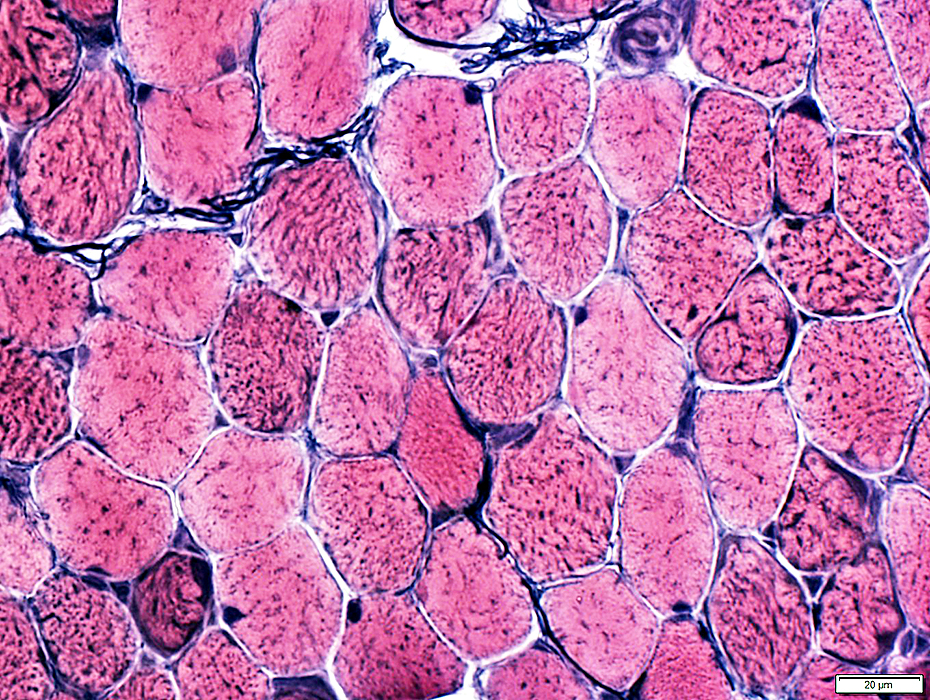 VvG stain |
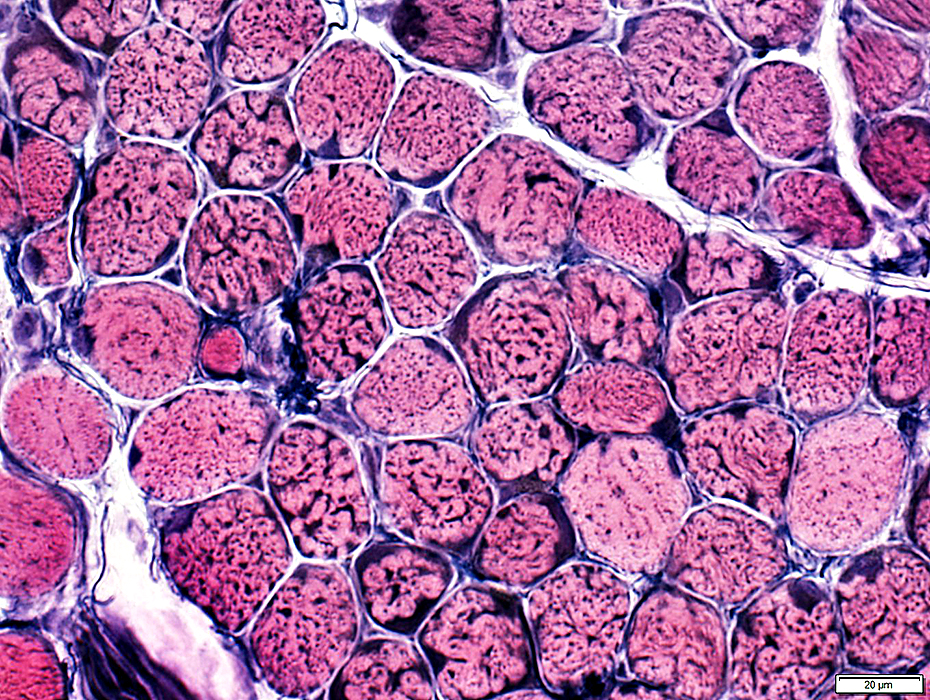 VvG stain |
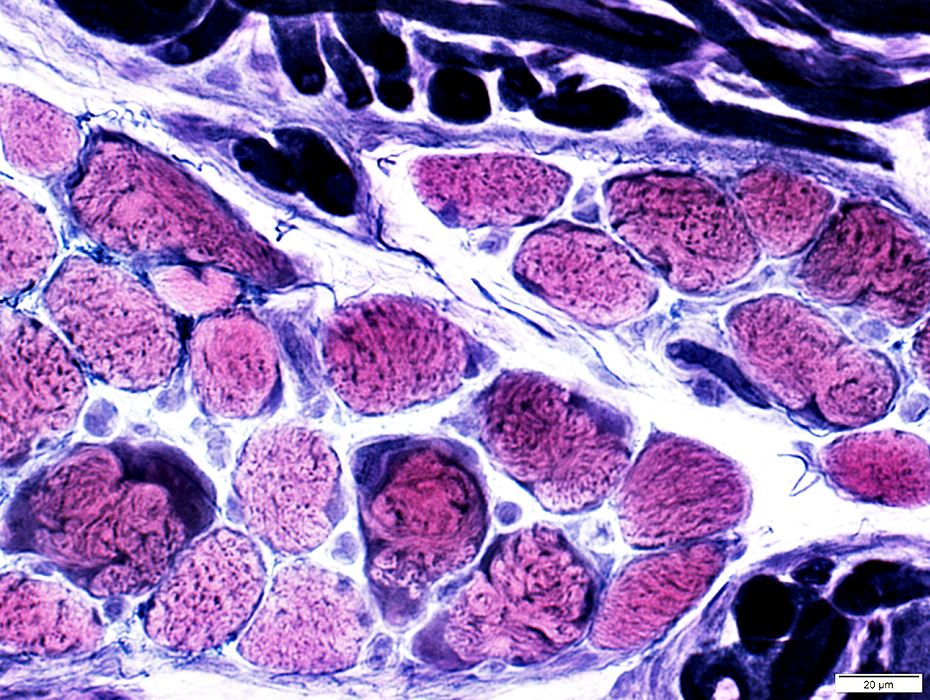 VvG stain |
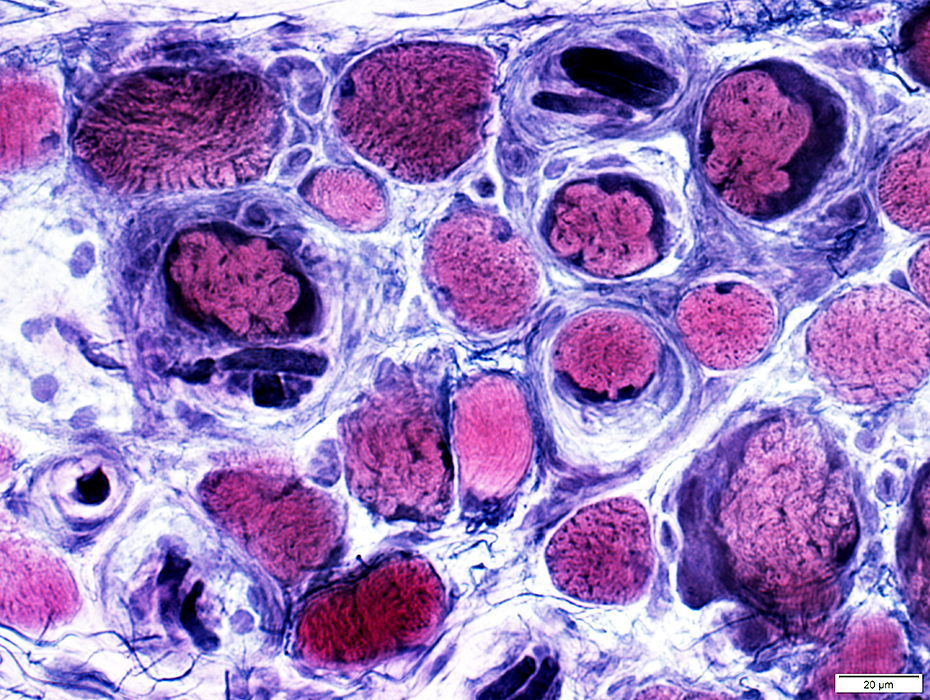 VvG stain |
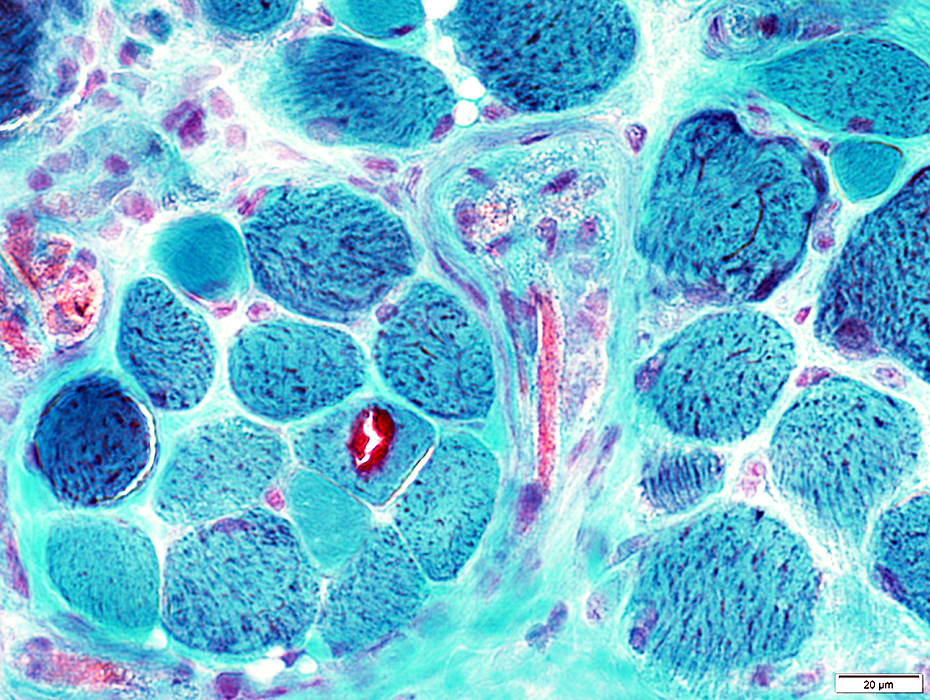 Gomori trichrome stain |
Abundant in muscle fibers
Some muscle fibers appear "ragged red"
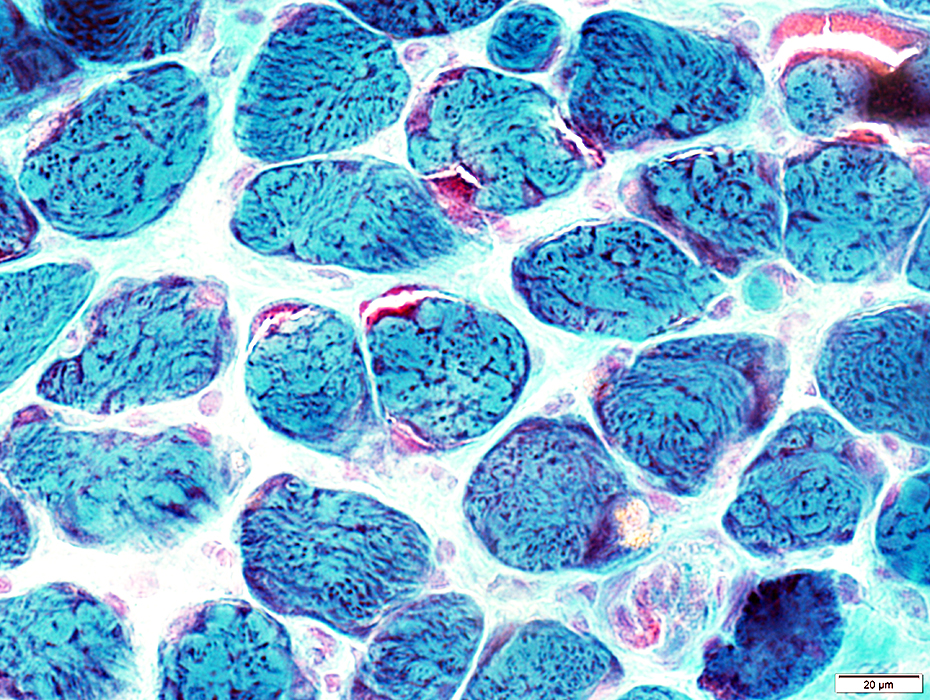 Gomori trichrome stain |
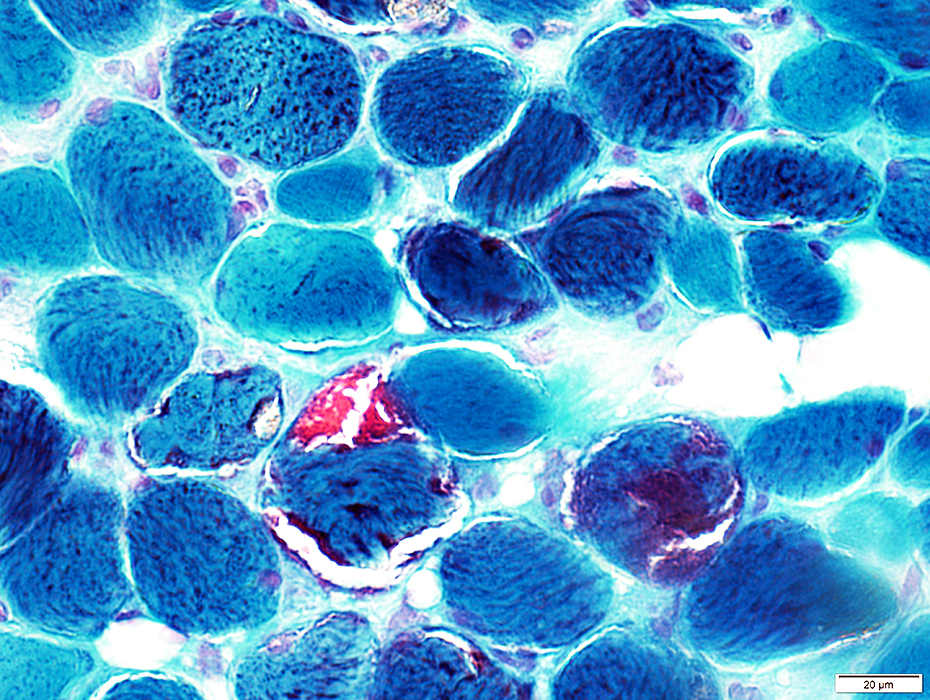 Gomori trichrome stain |
Internal architecture
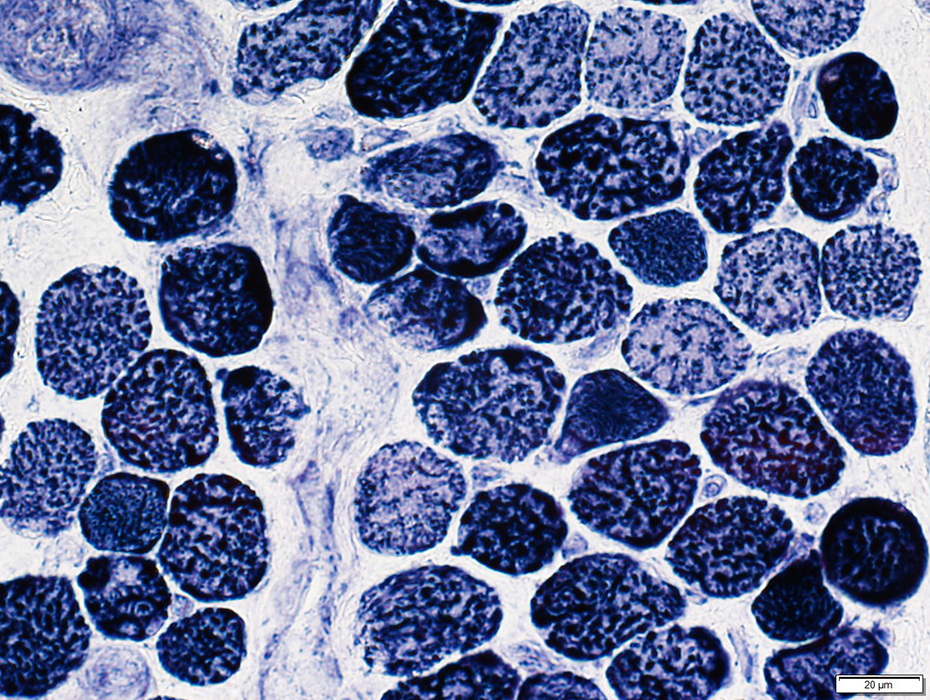 NADH stain |
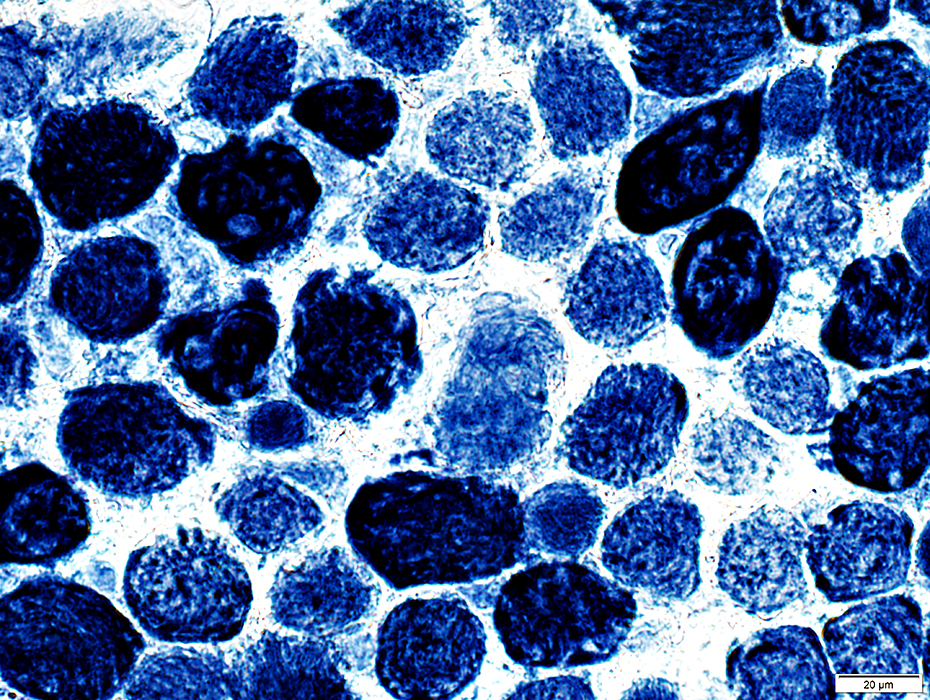 NADH stain |
Some muscle fibers are very darkly stained
Sarcoplasmic reticulum staining: Coarse; Punctate
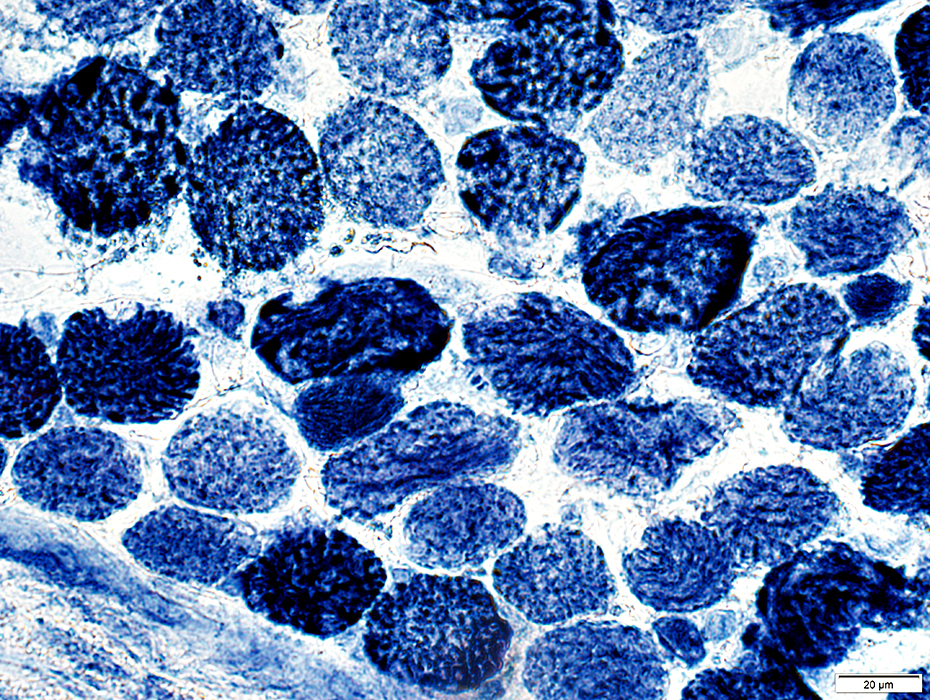 NADH stain |
EOM: Mitochondria
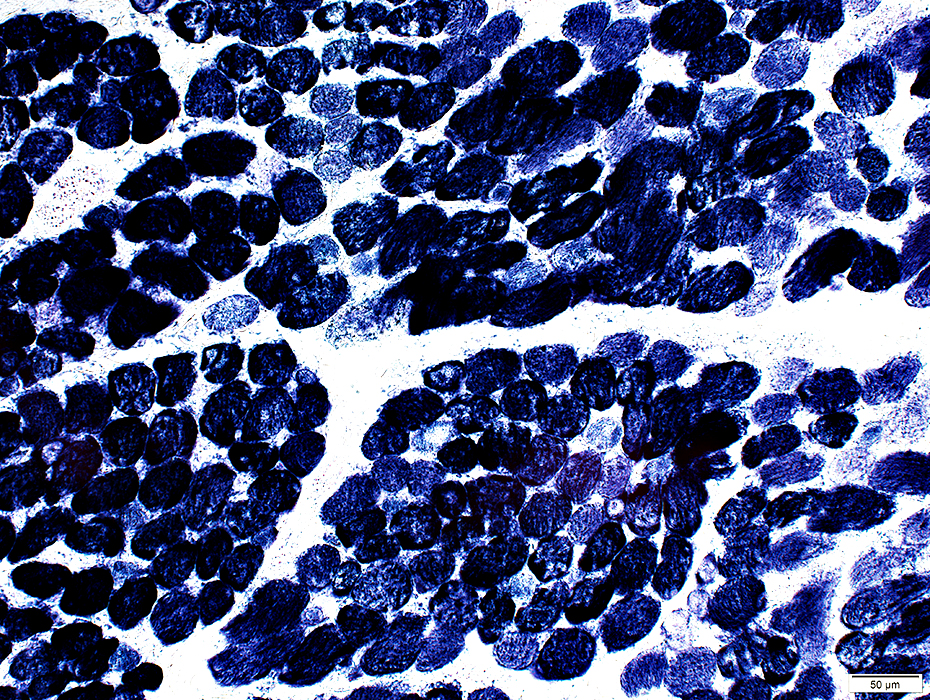 SDH stain |
Some muscle fibers are very dark stained for SDH
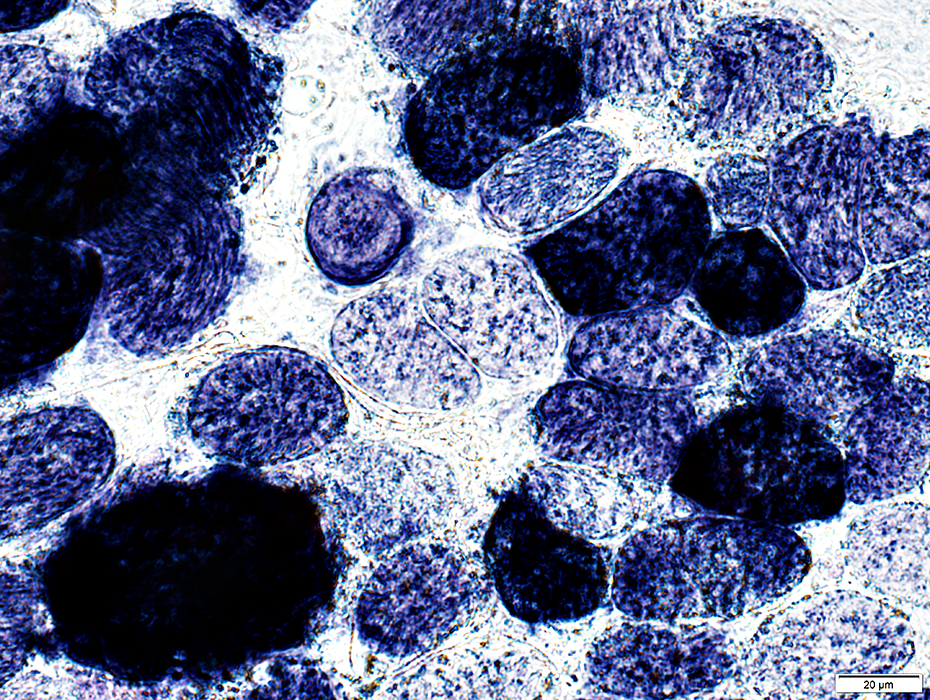 SDH stain |
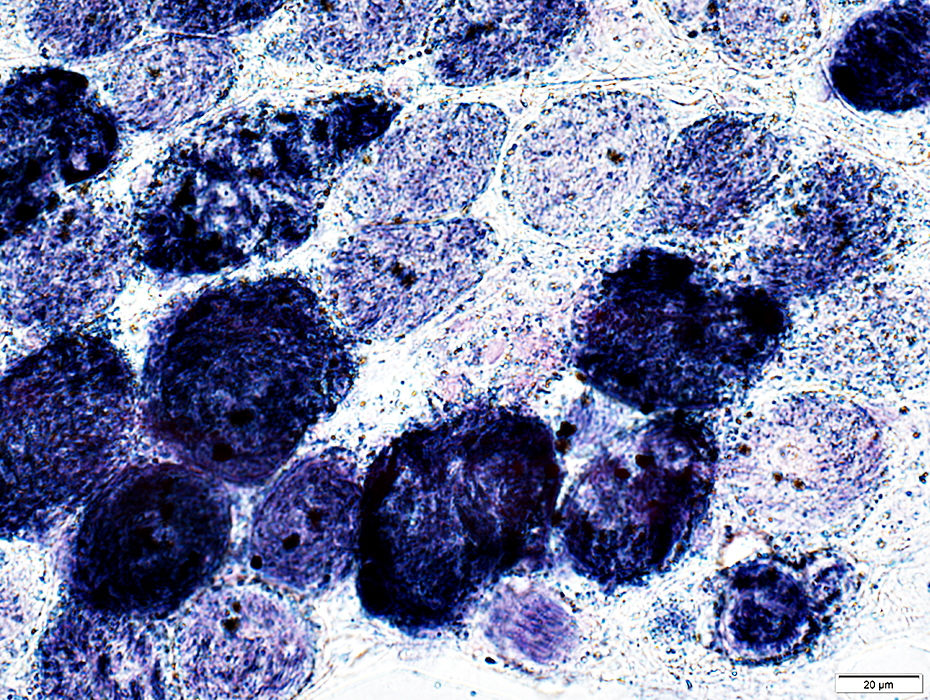 SDH stain |
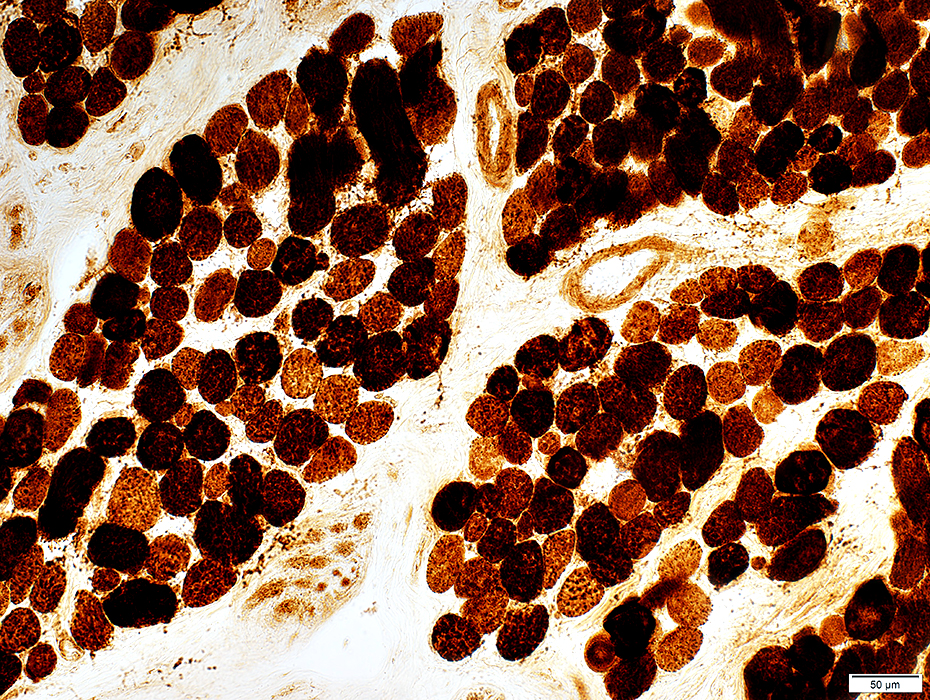 COX stain |
Some muscle fibers are very dark stained for COX
Mitochondria appear large
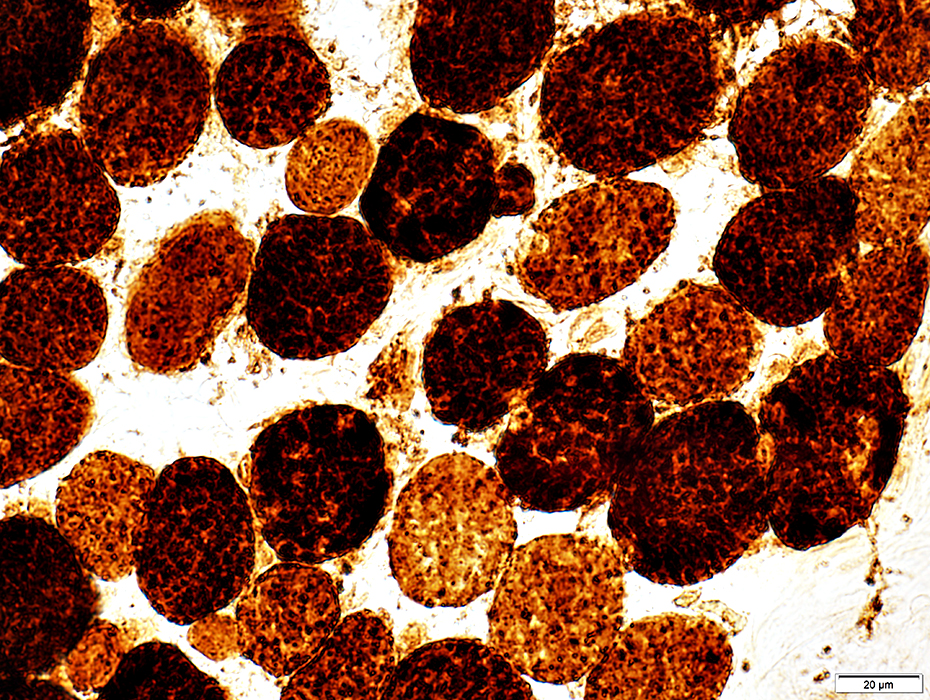 COX stain |
EOM: Fiber types
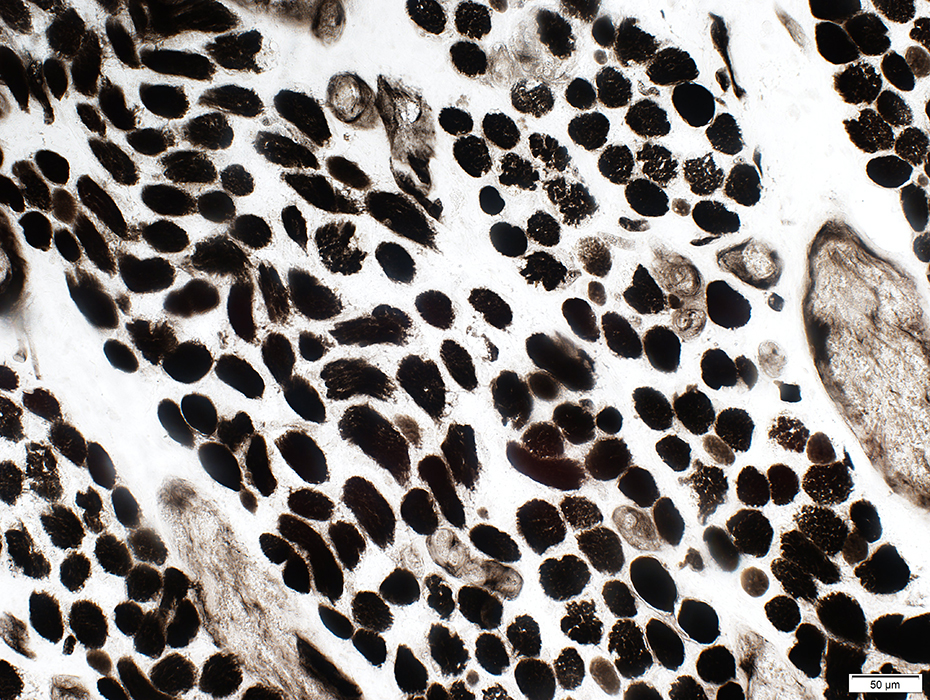 ATPase pH 9.4 stain |
ATPase pH 9.4: Dark stained
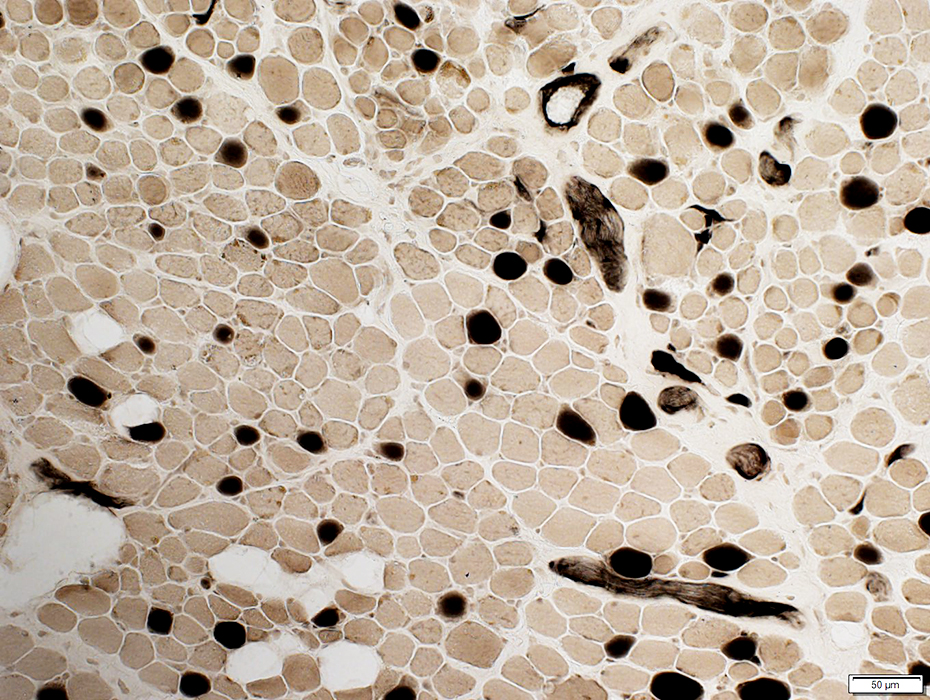 ATPase pH 4.3 stain |
Most similar to type 2C
ATPase pH 4.6 & 4.3: Intermediate stained
Few fibers similar to type I
ATPase pH 4.6 & 4.3: Dark stained
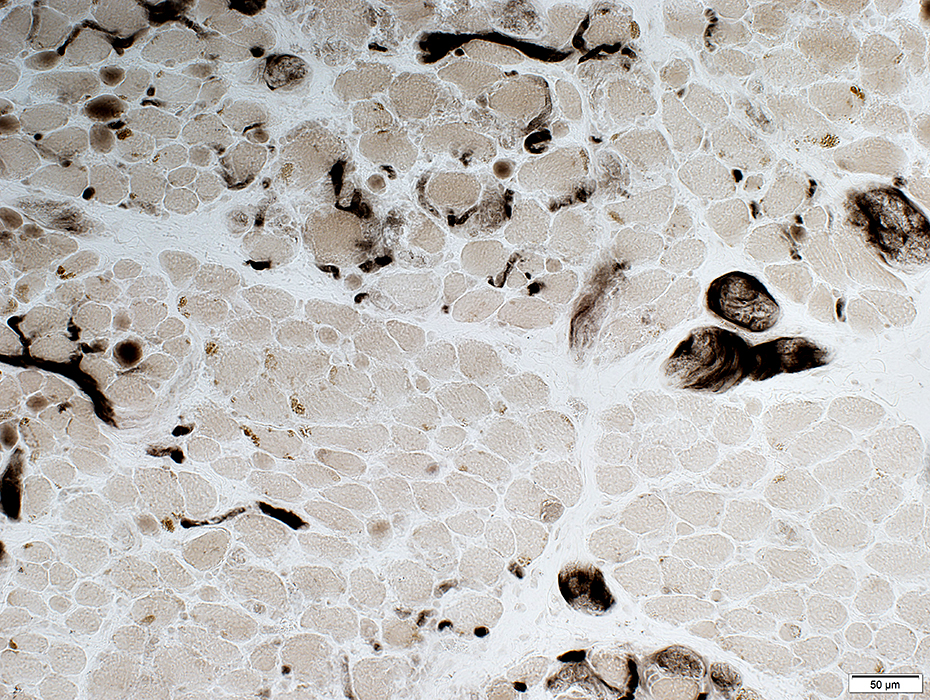 ATPase pH 4.3 stain |
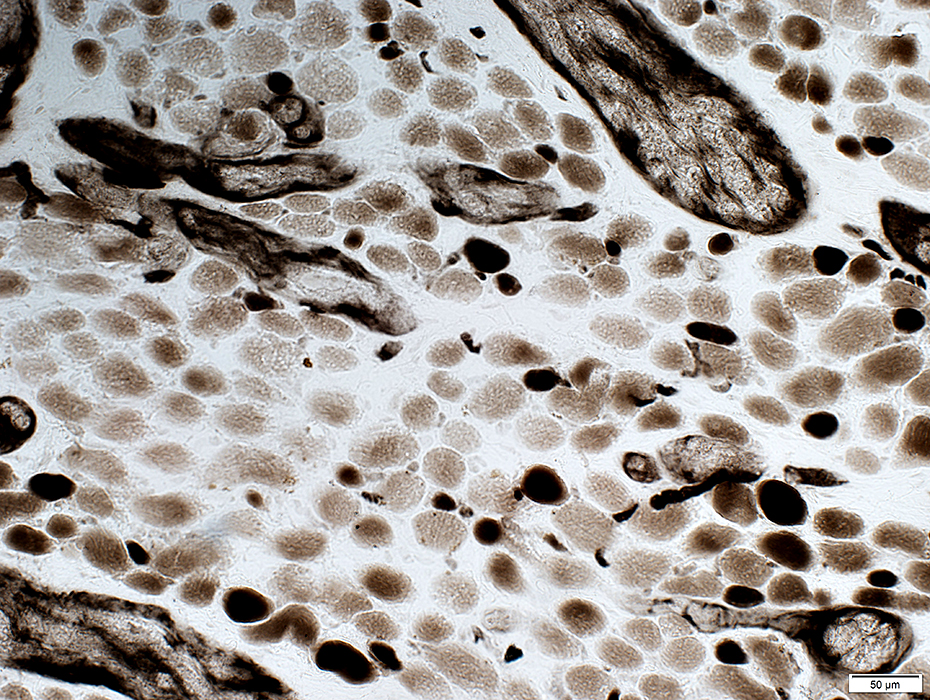 ATPase pH 4.6 stain |
EOM: Neuromuscular Junctions
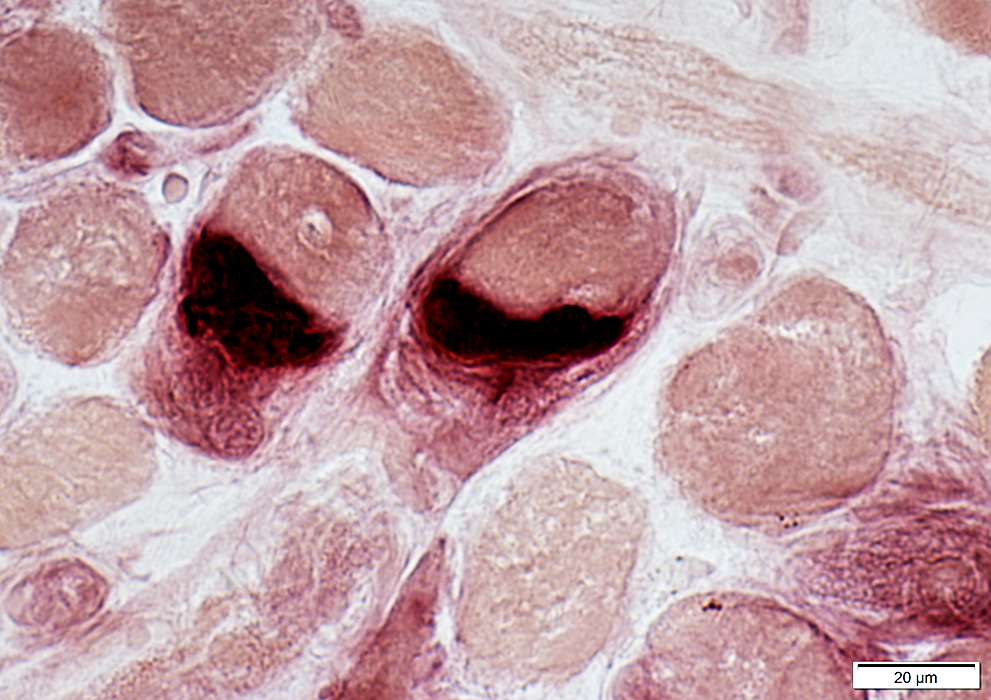 Esterase stain |
Dark stained by esterase
Large
May extend around surface of muscle fibers
 Esterase stain |
Varied sizes
Usually have 1 or 2 patches on single muscle fiber
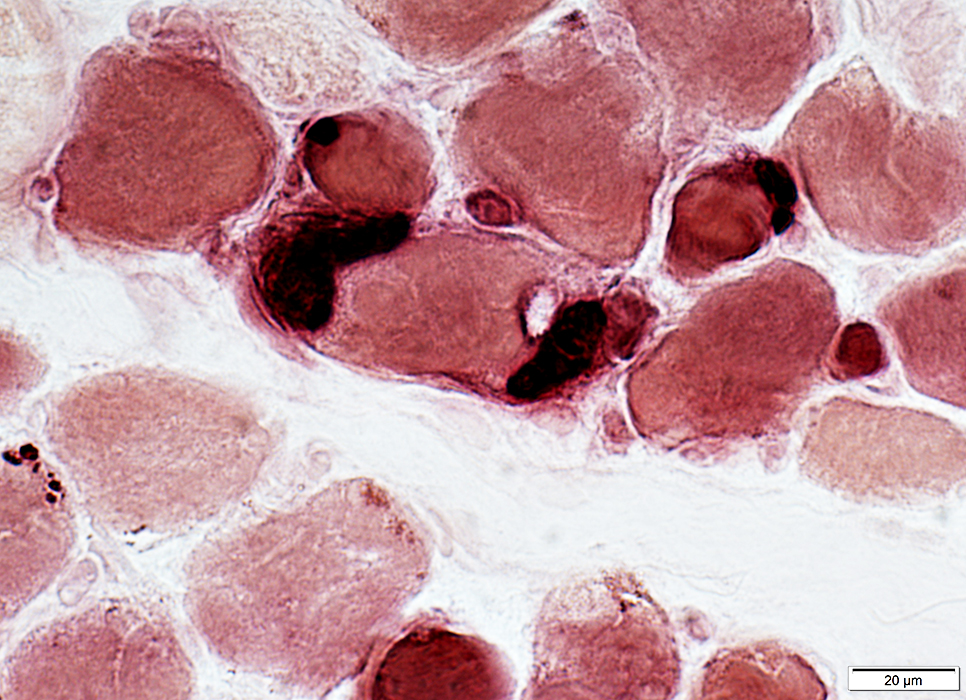 Esterase stain |
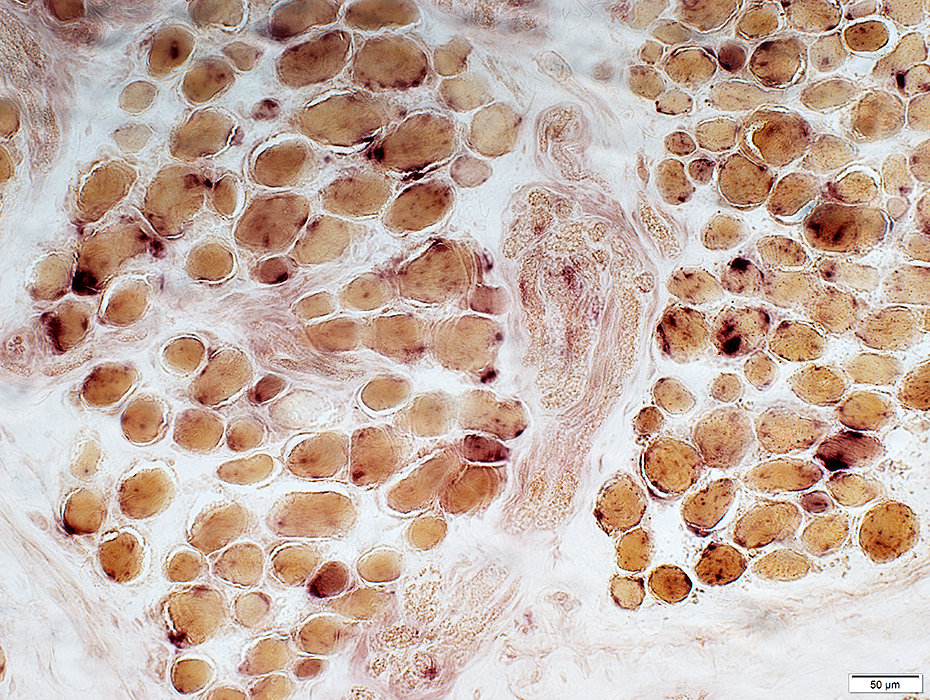 Acid phosphatase stain |
Acid phosphatase positive granules in muscle fibers
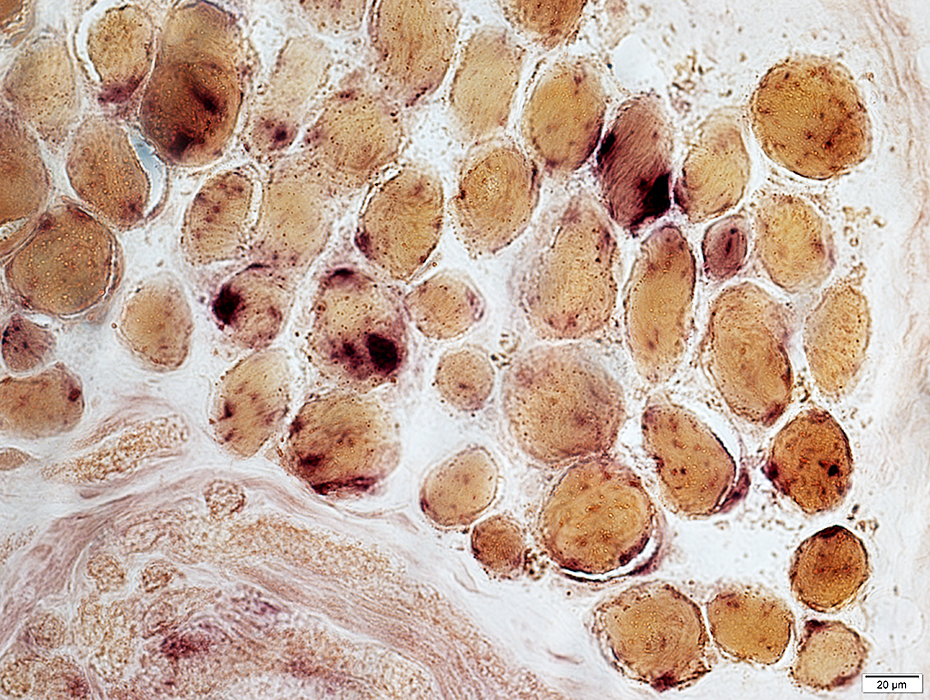 Acid phosphatase stain |
EOM: Endomysial capillaries
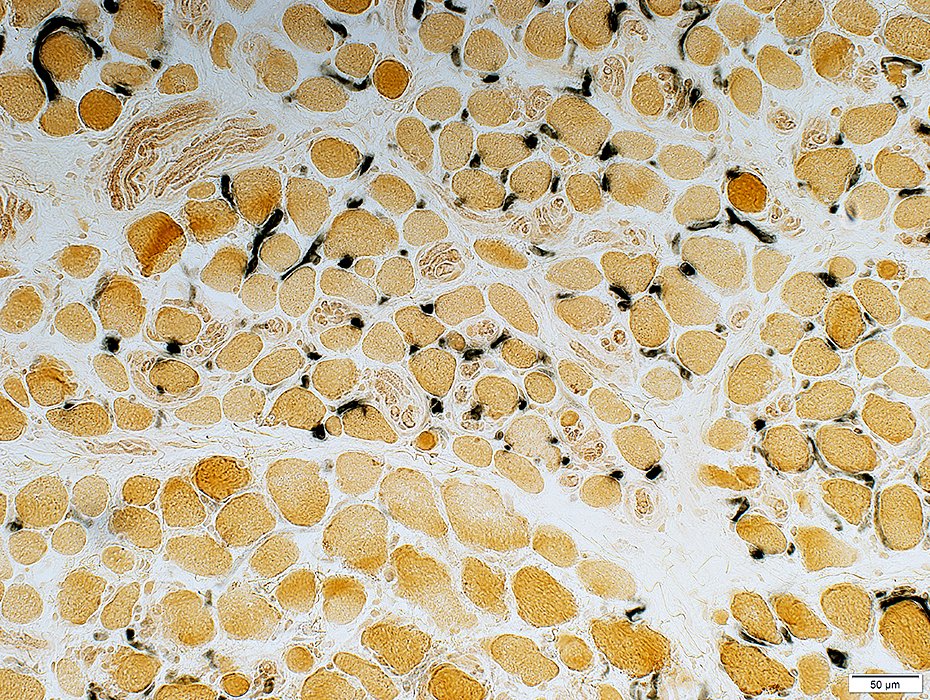 Alkaline phosphatase stain |
EOM: Lipid in muscle fibers
Muscle fibers have scattered, small, lipid droplets
 Sudan black stain |
Return to Pathology index
Return to Neuromuscular Home Page
7/12/2016